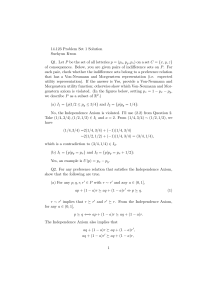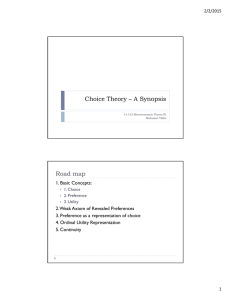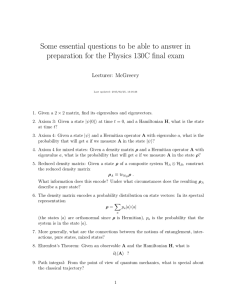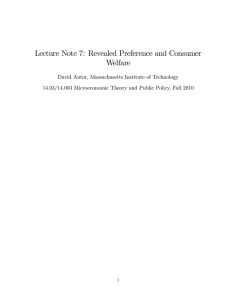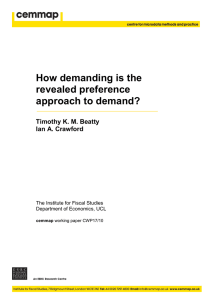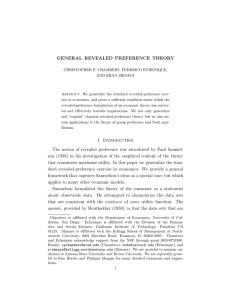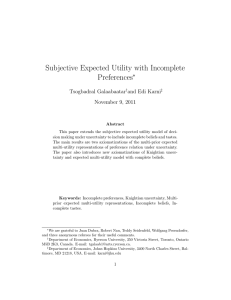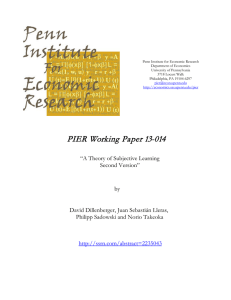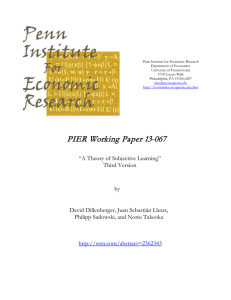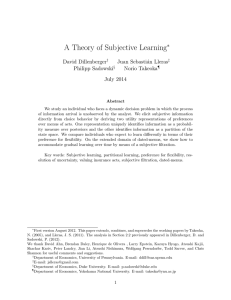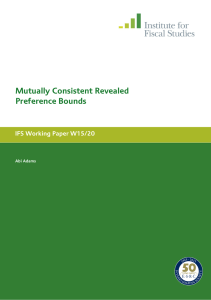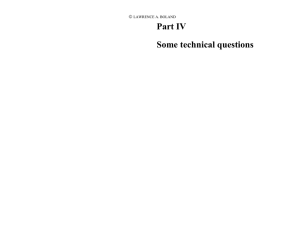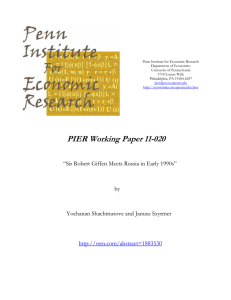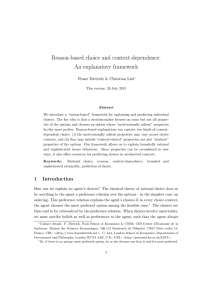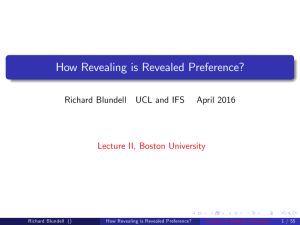Revealed Preference vs Ordinal Demand
advertisement
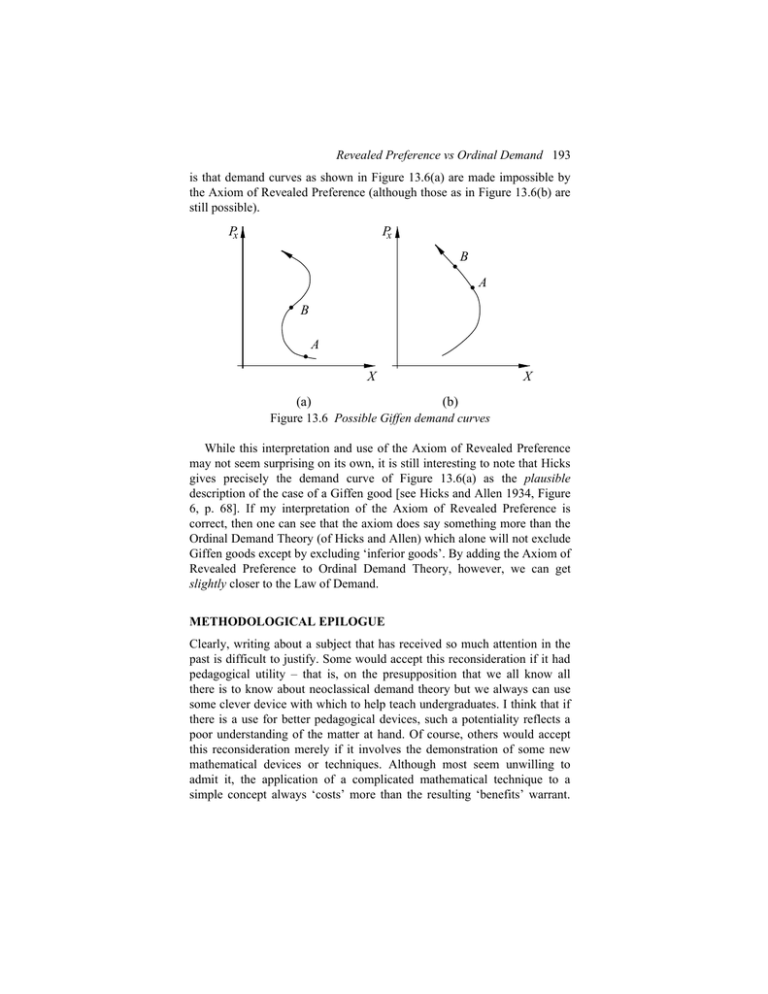
Revealed Preference vs Ordinal Demand 193 is that demand curves as shown in Figure 13.6(a) are made impossible by the Axiom of Revealed Preference (although those as in Figure 13.6(b) are still possible). Px Px B A B A X (a) X (b) Figure 13.6 Possible Giffen demand curves While this interpretation and use of the Axiom of Revealed Preference may not seem surprising on its own, it is still interesting to note that Hicks gives precisely the demand curve of Figure 13.6(a) as the plausible description of the case of a Giffen good [see Hicks and Allen 1934, Figure 6, p. 68]. If my interpretation of the Axiom of Revealed Preference is correct, then one can see that the axiom does say something more than the Ordinal Demand Theory (of Hicks and Allen) which alone will not exclude Giffen goods except by excluding ‘inferior goods’. By adding the Axiom of Revealed Preference to Ordinal Demand Theory, however, we can get slightly closer to the Law of Demand. METHODOLOGICAL EPILOGUE Clearly, writing about a subject that has received so much attention in the past is difficult to justify. Some would accept this reconsideration if it had pedagogical utility – that is, on the presupposition that we all know all there is to know about neoclassical demand theory but we always can use some clever device with which to help teach undergraduates. I think that if there is a use for better pedagogical devices, such a potentiality reflects a poor understanding of the matter at hand. Of course, others would accept this reconsideration merely if it involves the demonstration of some new mathematical devices or techniques. Although most seem unwilling to admit it, the application of a complicated mathematical technique to a simple concept always ‘costs’ more than the resulting ‘benefits’ warrant.



